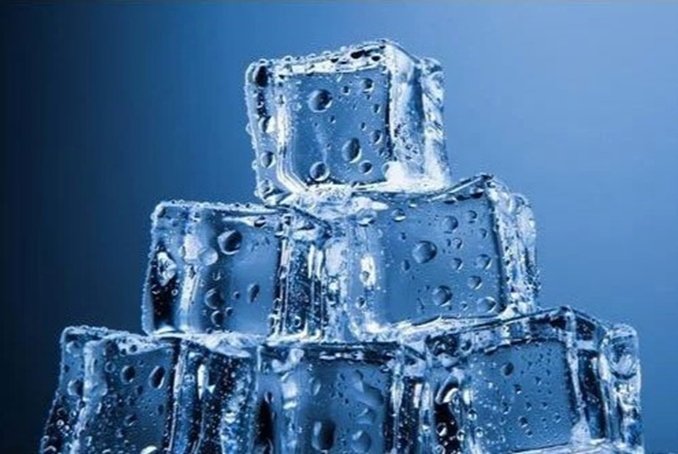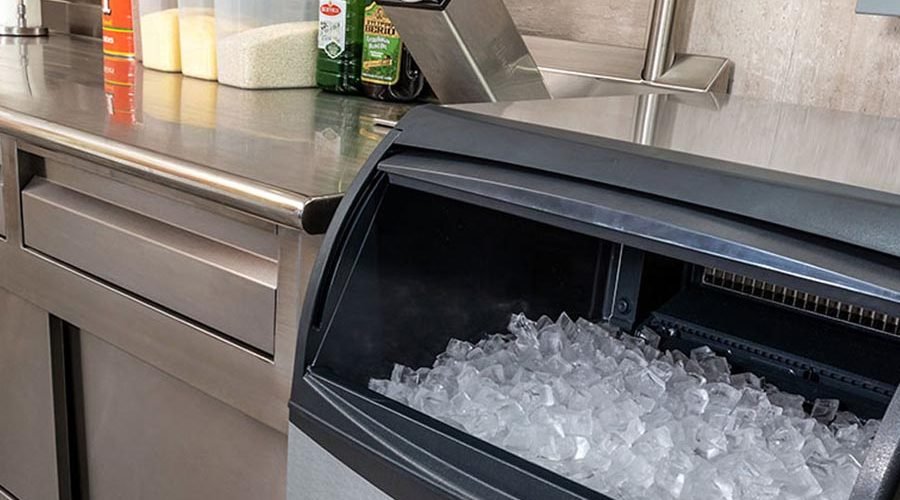Table of Contents
5 Questions to Ask Before Buying a Commercial Ice Machine
Commercial ice machines are an essential part of any food or beverage establishment. With the cost of ice skyrocketing, you need to be sure that you are getting the best possible commercial ice machine for your needs.
Buying an ice machine for your commercial establishment has never been tougher. With so many different brands, types, and prices, it can be overwhelming. If you are contemplating buying a commercial ice machine and want to make the best possible choice, consider the durability of water pump of ice machine and water inlet walve for ice machine to help you in your decision.
What You Need to Know Before Purchasing a Commercial Ice Machine
With the prospect of increasing demand for ice machines, it’s important to ask these 5 questions before buying a commercial ice machine in 2022. Let’s break down the most important questions to ask before making a purchase
Question 1: What type of ice machine is best for your business?
There are many alternatives available when choosing the type of machine you require. When conducting research, you can come across a number of different words for ice machines, but you should be aware of two primary types: modular and self-contained.
Modular Units

A modular unit is a device that generates ice but does not store it. In some instances, it is referred to as an “ice machine head”. One can install an additional dispenser or storage bin to attach to the unit, but one need to buy it separately. Nevertheless, if you use a lot of ice every day, you may simply replace the dispenser or bin. This is practical for enterprises that expand and eventually require additional ice every day.
Despite typically being larger machines, modular units come in a range of sizes. Between 45 and 3,000 pounds of ice are produced by them daily, which is a larger production. These features make them an excellent option for businesses like hotels, hospitals, and sizable restaurants or bars that frequently need a lot of ice.
Self-Contained Machines

Self-contained ice makers make and store ice all in one unit. They already have a bin built in. One sort of self-contained machine is an “under-counter machine,” which fits neatly underneath a counter, while another type is a “countertop machine,” which rests on top of a counter.
These machines typically produce a reasonable amount of ice each day—between 60 and 300 lbs.—and are often smaller than modular systems. A self-contained unit is your best option if you have limited storage space or a few daily ice needs. Small bars and restaurants, day-care facilities, and churches can all benefit from a self-contained machine because it produces less ice.
Question 2: Do you want to purchase new or used?
Before making a purchase, you can decide whether to purchase a new or a used ice maker. Of course, compared to buying new, purchasing used ice makers will cost you less upfront.
However, ice makers face significant wear and tear on a daily basis. Because the warranty probably has already expired, you may have to pay out-of-pocket for any needed maintenance, cleaning, and repairs when you purchase a used ice machine. As a result, these services may cost you more than if you had bought a new machine.
Therefore, before buying a used unit, ensure that you inspect it personally. This will enable you to check it for any damage that needs to be fixed. When examining, look for:
- Component corrosion or excessive wear and tear
- Condenser coils that are bent or corroded
Ask the vendor of the ice maker for a history of the device as well. This ought to provide details such as the previous owner, the location, and the routine maintenance carried out.
Also, keep in mind that you have the choice to buy a refurbished machine. These machines often cost around 50% less than a new one, which may assuage your concerns about overpaying for repairs and maintenance.
Question 3: What is your daily ice output and usage, and what type of ice do you need?
Firstly, purchase a machine based on how much ice you require each day. 300–600 lbs. of commercial ice are produced daily using machines with “moderate” output. Up to 3,000 lbs can be produced each day by high-capacity machinery. Naturally, your daily needs will change as they do in every firm. To ensure that your ice maker can handle the demands of your busiest days, though, it’s crucial.

For financial reasons alone, avoid purchasing a machine with a poor production rate. Customers could become irate if there is poor ice manufacturing on a busy day. Plan ahead for your company’s expansion, don’t forget. To be ready for the future, find a machine that can produce 10–20% more than what you currently require.
Secondly, choose an ice maker depending on the kind of ice it generates. Various ice kinds are best suited for various uses. Finding the right kind of ice for your industry can increase profitability.
Here are some details on various types of ice:

- Flake Ice- Shaved or Flake ice has a wide surface area that can swiftly cool objects and be compacted easily.
- Nugget (Pearl, cubelet, sonic ice)- Nuggets are a form of lightweight, chunkier-shaped shaved ice that keeps beverages from sticking together and fizzing or foaming.
- Half cube- An ice cube with greater weight and slower melting rate than shaved ice. allows for more ice to fit in the glass and prolongs the period during which drinks remain cold.
- Full cube- Full cube ice is larger than a half cube, popular, and simple to construct, and slowly melts
- Gourmet- Gourmet ice is “Premium” cubes for high-end settings that slowly melt and do not adhere.
Question 4: What kind of condenser do you need?
Consider the type of condenser that you require after choosing a commercial ice machine type and ice type. Your machine’s condenser, which is in charge of producing ice, is comparable to the engine. Think about the three condenser kinds listed below:

- Air-Cooled
Condensers that are air-cooled are often the most affordable and widespread. In reality, an air-cooled condenser is used by about 70% of industrial ice makers in the United States. These appliances employ air to ensure that heat is dissipated from the device and to maintain the proper temperature of the ice.
Air-cooled systems feature vents that must have room on all sides in order for air to properly exit because they release hot air. These devices have the disadvantage that they can begin to malfunction in temperatures between 70 and 90 degrees or higher. They may be overly noisy for some commercial settings, which is another disadvantage.
- Water-Cooled
Water-cooled condensers use water instead of air to maintain the unit’s cooling. These units do not require additional room surrounding the unit to expel hot air, in contrast to an air-cooled unit. Additionally, they make less noise. They work best in conditions that are 80 degrees or hotter, though. They might also drain your resources and utilities because they need a steady supply of water.
- Remote-Cooled
Remote cooling condensers are comparable to air-cooled devices in that they rely on air to keep their interiors at a cool temperature. But the condenser, which is typically attached to a wall or ceiling, is actually separate from the machine. They are usually erected on the company’s roof. They don’t make a noise as air-cooling machines do. However, they are considerably more expensive than standard air-cooled condensers.
Question 5: Does the machine fit your space, and how will you maintain it, clean it, and make repairs?
Make sure the industrial ice maker you intend to purchase will fit comfortably in the space you have set aside for it. Your overall measures may increase in width and depth because of exterior components such as ventilation fans, water filters, tubing/hoses, and ice bins. To provide safe evacuation of hot air, a machine that uses an air-cooled condenser will require around 6 inches of space on both sides.
Measuring the area you wish to keep the ice maker to the nearest inch is the best method to prepare for this. Then, precisely measure the machine, taking note of the ice bins and ventilation spaces. Additionally, you want to confirm that the device can pass entrances, hallways, etc, whenever you move the machine into your area. Last but not least, check to see if the region has all the plumbing and electrical hook-ups required to run the machine and that they comply with all applicable local, state, and national regulations.
Finally, the cost of maintenance, cleaning, and repairs will probably be included in your budget when purchasing an ice maker. This is especially true if you purchase an older second-hand machine because it will need more maintenance than a new one. Ask the dealer specific questions about the machine before you buy it, such as regarding its maintenance history, warranty status (if any), and the cost of replacement parts. The dealer should be able to provide you with information on typical costs for frequently changed parts, cleaning and maintenance costs, and how frequently the appliance may require servicing.
Create a regular cleaning and maintenance routine after taking note of this information. You should typically make an appointment every six months. This is crucial to do in order to maintain the machine functioning correctly, especially if it is an older model.
Commercial kitchens are a hotbed of activity. From cooking to washing dishes, every task must be done in a timely and efficient manner. If your equipment breaks, then you can be faced with a backlog of tasks that will take much longer than normal to complete. Thanks to PartsFe, you can replace parts for all kinds of commercial kitchen equipment in order to keep it working smoothly.
If you own a restaurant, chances are you need to replace your kitchen and cooking equipment parts from time to time. We at PartsFe, offer a wide variety of OEM replacement parts and accessories for your restuarant kitchen equipment such as ice machines, grills, burners, ovens and more from well-known manufactures.
Browse through our collection and find the right OEM part for your requirements! We offer the best food service equipment parts at competitive prices with same day shipping.





